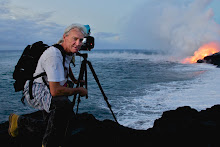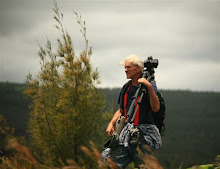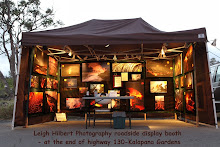 (Click on this photo to see a larger size)
(Click on this photo to see a larger size)Trees burned as a narrow line of molten lava continues to slowly plow its way down the western edge of remnant Royal Gardens and proceed further down the pali towards the sea. The southern tip appears to be near the 1000-foot elevation now. I purposely included the Civil Defense barricades to give perspective. The photo was taken at the trailhead of the Hawaii County lava viewing area. For a comparison you could look at the daytime image of the area I posted yesterday.
USGS/HVO magma deformation monitors are showing strong inflation that has soared up beginning 24-hours ago

The pressure seems to already be lessening but it still has already put a nice boast of more lava into the surface flow on the pali, which will likely continue tonight and tomorrow. Even while I was watching the lava on the pali and taking photos last night, I could see new bright lava glows appearing high up on the edge of the pali near the 1700-fot elevation. These can be seen on the upper right of the photo above.
Halema’uma’u Crater was looking well defined this morning as seen on the USGS/HVO Jaggar cam.

And the new inflation spike also brought the Halema’uma’u pit vent back to life with brighter glow as the evening went by. I spoke with visitors who were there just after dark and some who were there later in the evening; just in that time their reports went from slight glow to strong glow. So tonight, if weather & fumes cooperate, crater glow could be bright.
USGS Hawaiian Volcano Observatory’s Volcano Awareness Month ends today. They presented some outstanding programs, seminars, media presentations, as well as informative hikes & workshops. I want to thank all the staff there for their dedication, ongoing studies and for offering so much to the people of Hawaii and beyond. Our understanding of this world wonder we live on - the world’s most active volcano - is greatly improved by all those who study its geological diverse aspects.
National Weather Service out of Honolulu has posted a high surf advisory stating in part: “SURF ALONG NORTH FACING SHORES OF NIIHAU...KAUAI...OAHU...MOLOKAI AND MAUI WILL BE 18 TO 22 FEET TODAY. SURF ALONG WEST FACING SHORES OF NIIHAU AND KAUAI WILL BE 12 TO 18 FEET TODAY. SURF ALONG WEST FACING SHORES OF OAHU AND MOLOKAI WILL BE 10 TO 15 FEET TODAY.


























































